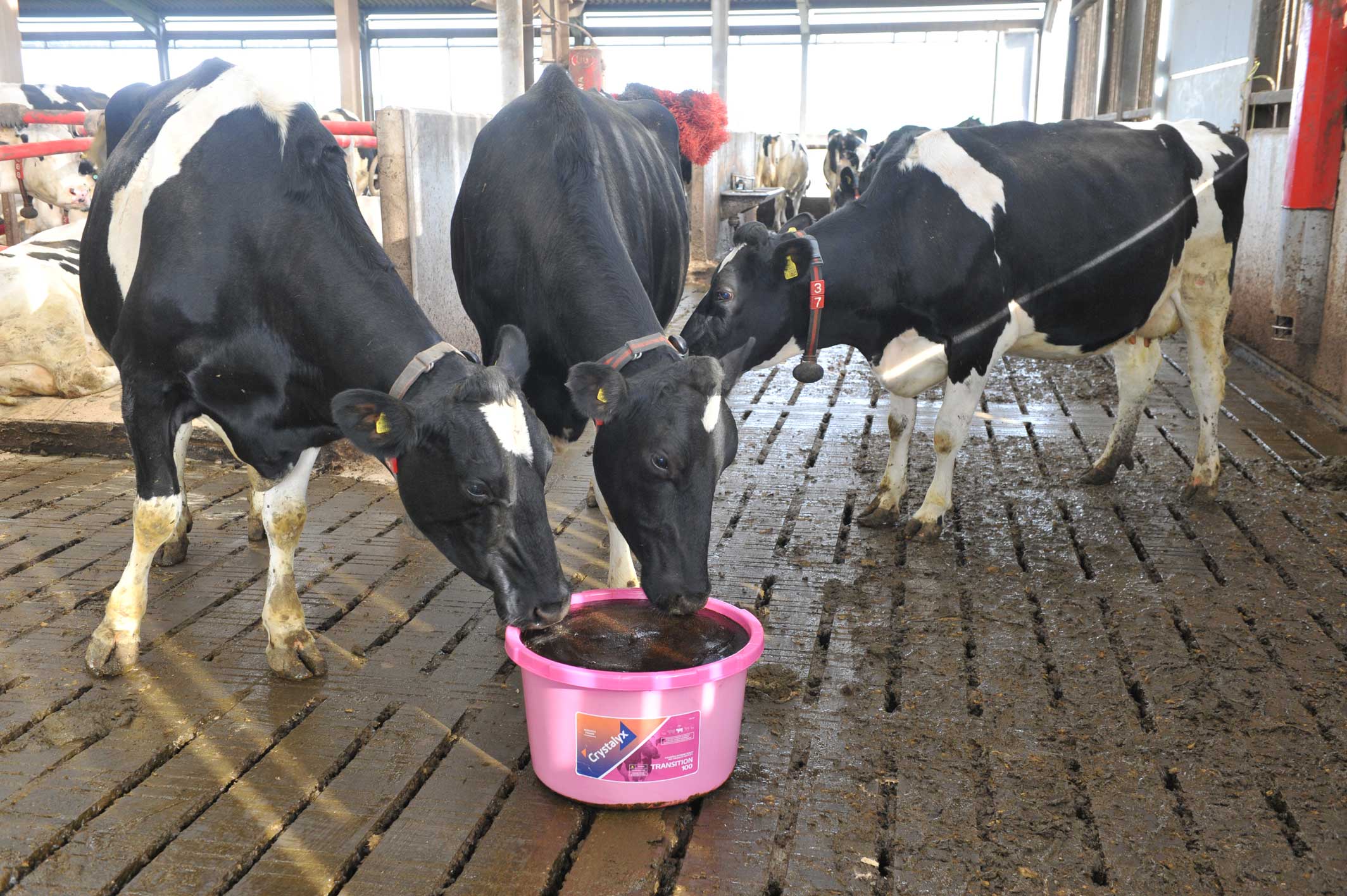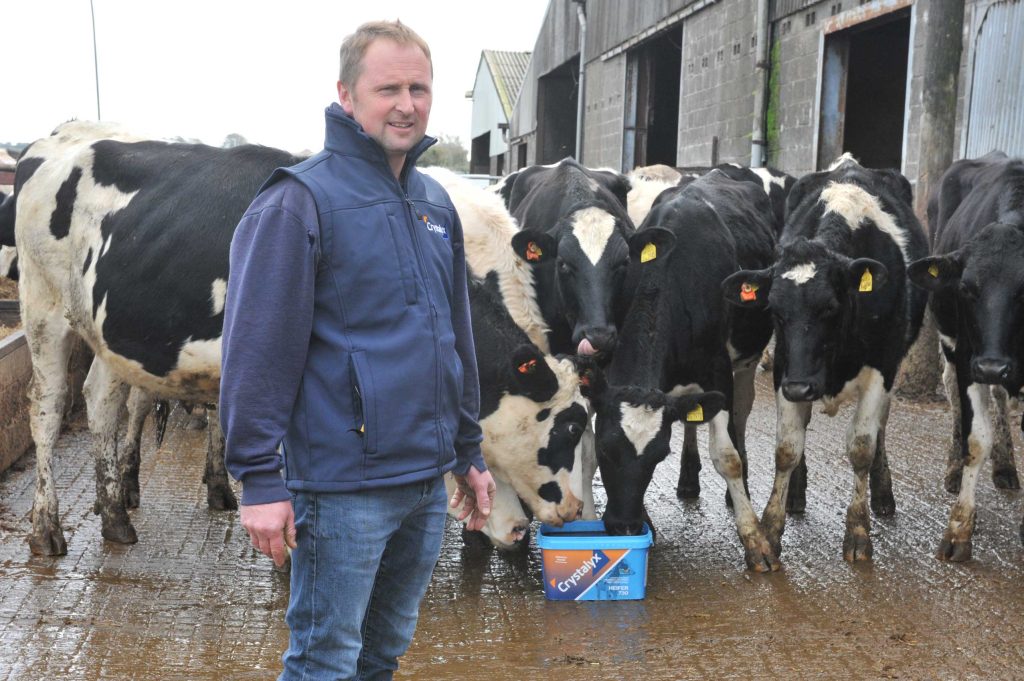Feeding free-access feed licks during the dry period elevates cow fertility and milk yields in early lactation on high-performing Pembrokeshire dairy herd. Since using Crystalyx Transition 100, some cows are producing north of 40 litres a day within 10 days of calving.
Mark and Caroline Davies farm 235-acres of grassland and milk 250 pedigree Holstein Friesian cows – namely the – on a robotic system. Milk is produced on a level profile, averaging 12,000 litres at 4.59% butterfat and 3.5% protein. Milk is sold to Muller.
The focus is on increasing yields while retaining butterfat and protein and producing high quality feed from a multi-cut silaging system. The herd is now achieving 859kg milk solids per cow per year with minimal bought-in feed.
The focus is on producing high quality feed from a multi-cut silaging system on the 235-acres of grassland. In 2022, The Davies took 5 cuts of silage, with the first-cut analysing:
- 11.6MJ/kg ME,
- 17.8% protein,
- 42.1% dry matter, and a
- 72.4% D-value of.
The silage is made into a Total Mixed Ration (TMR) with lucerne hay, grass hay, brewers grains and an 18% blend. Minerals are not incorporated in the TMR because of the high level of concentrates fed in the robots. A 16% cake fed to a maximum of 14kg for cows producing in excess of 40 litres.
While the milking herd is housed all-year round, the youngstock and far-off dry cows graze during the summer months. The Davies’ carried out extensive research on how to bridge any mineral gap during the dry period.
Supplementation for first-calving heifers
Heifers are served at 15 months to calve at 24 months. With such good quality forage, heifers receive no concentrates. They just have access to a Crystalyx Heifer 730 low moisture feed lick two months before serving. The Davies’ first used the low moisture feed lick last winter, and saw an immediate improvement in heifer fertility.
“They get all the minerals and goodness they need from Crystalyx Heifer 730, they really benefit from that build-up of minerals,’’ says Mark. “If heifers are licking the buckets then in our minds there is no doubt that they need what’s in them. It wasn’t that we had much of a problem with fertility before but there was a definite improvement, it helped to push the heifers on. We were using 1.9 straws per conception and now it is 1.4 – that saves money on straws and it means the heifers are getting in calf quicker.’’
Supplementation during the dry period

With the heifers on track, The Davies also supply Crystalyx Transition 100 towards the end of the dry period. Crystalyx Transition 100 is a very high energy feed lick designed specifically to stimulate appetite and dry feed intake in freshly calved cows, keeping the energy balance right.
“The time it takes for the cows to get to maximum yield has improved by almost a week,’’ Caroline reports. “As with the heifers, there has been a notable improvement in fertility, averaging 1.5 straws per conception – down from 2.2 straws. It is quite a lot to achieve, to expect a cow to produce 12,000 litres of milk and hold to sexed semen, but we are now getting a 50% success rate” – Mark and Caroline Davies.
“Rather than buy mineral bags and provide it in the feed, providing the licks means that a cow can take what she wants when she needs it,’’ says Mark. “Some cows might not have quite the condition on them, and they are the ones that we see using the licks. It is there for them when they need it.’’
“Whether the milk price is good or bad, if the cows need it they have it. That is the case with the Crystalyx feed licks. It is no good cutting things out when the price is bad because the reason a farmer will be using a product is because the cows need it.’’


